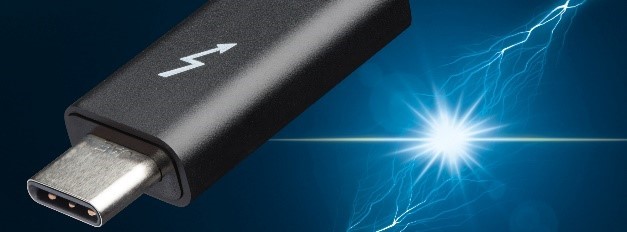By Jason Ziller, Director of Thunderbolt Marketing, Intel Corporation
"I always hated – and I still don't like – movies about the future. I just think they're impossible, and somebody's always keeping score."
-Robert Zemeckis, Back to the Future: The Ultimate Visual History
For those of us in the technology product space, it’s easy at times to relate to this ironic commentary from the great film director Robert Zemeckis. But despite all of the failed inventions and half-baked ideas that debut each year, it can also be rewarding to imagine the potential that lies ahead for the next great technological achievements.
When I first started working with Thunderbolt at its inception, we had broad, ambitious goals to deliver to you the fastest connection to a computer while supporting both data and video on a wide range of devices. With the introduction of Thunderbolt 3 this past spring, you now have the most versatile port available – which has tremendous potential for the future of computing.
So, what does the future of computing with Thunderbolt look like? A single compact port that spans the smallest detachable 2-in-1s up to the most powerful workstations. It is simple, just works – connects to any dock, display, or data device. Plus it is unrivaled for a variety of compelling uses, such as:
- 4K video momentum. Rich content creation is certainly one of the most widely used aspects of Thunderbolt today. With the predicted growth of 4K video, Thunderbolt will become an even more critical tool for handling these incredibly large files. With Thunderbolt you can take the raw 4K content, edit it on your computer and display it on your screen at the same time – all real-time interaction. As more consumer devices, like 4K GoPro cameras, come to market, we’ll continue to ramp and broaden Thunderbolt adoption.
- Single-cable docking expansion. Docking stations today let users have the convenience and ease of a lighter, more mobile notebook but without sacrificing a desktop experience with multiple monitors, storage, Ethernet connection, and many more devices. Docks are mostly prevalent in business environments today, but we think that even consumers will be more likely to leverage this advantage given the very simple connections that Thunderbolt now offers.
- External graphics enhancement. With external graphics over Thunderbolt, you can have a thin notebook or a mini-PC and plug it into an external device to get a desktop-quality visual experience. There’s a lot of excitement in the industry about this concept, especially as it relates to the gaming experience, so we expect this to be a growing area of focus over the next year.
- Thunderbolt networking. This is something we like to call 10GbE for free, where you get fast networking with standard Thunderbolt ports and cables. By connecting two or more computers together with Thunderbolt, you can share files, content, and even have a shared storage device on this local network. It looks like an Ethernet connection but at very fast Thunderbolt speeds.
In this third generation of this technology, we’re seeing much broader appeal across the PC industry, with both business and consumer computer systems. It’s an indication of what the future holds for Thunderbolt adoption, and I’m optimistic that we’re on the right track for reaching our vision of having Thunderbolt as the single cable that truly does it all.
What do you hope to see with the evolution of Thunderbolt in the near future?
Come see the latest products and uses with Thunderbolt 3 at CES 2016 in Las Vegas!



Follow Intel & Learn More About Thunderbolt™ Subscribe to Intel's YouTube Channel